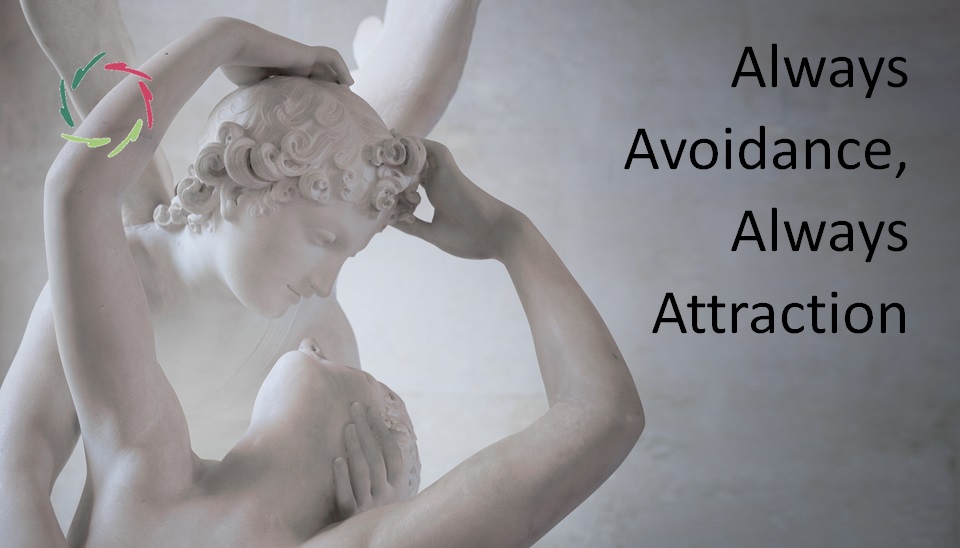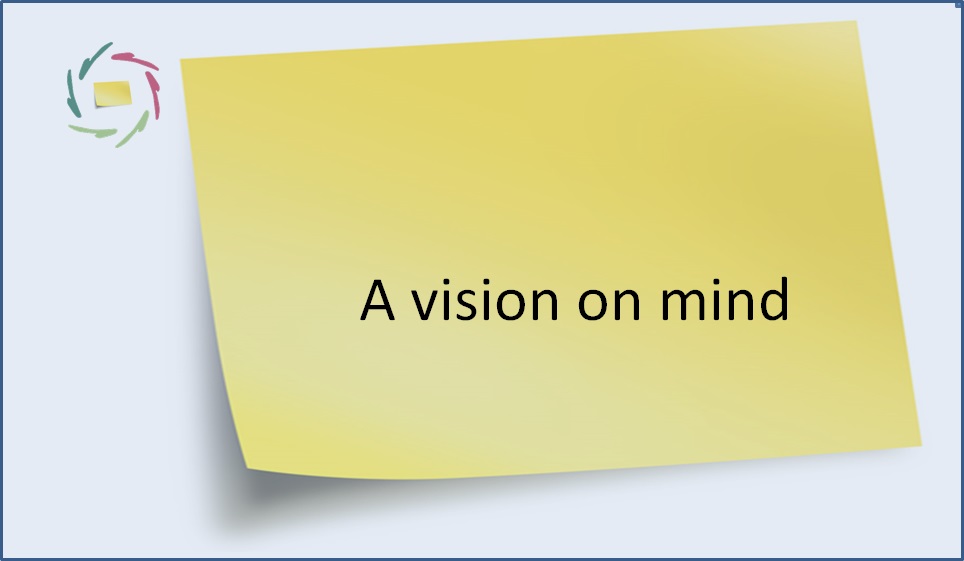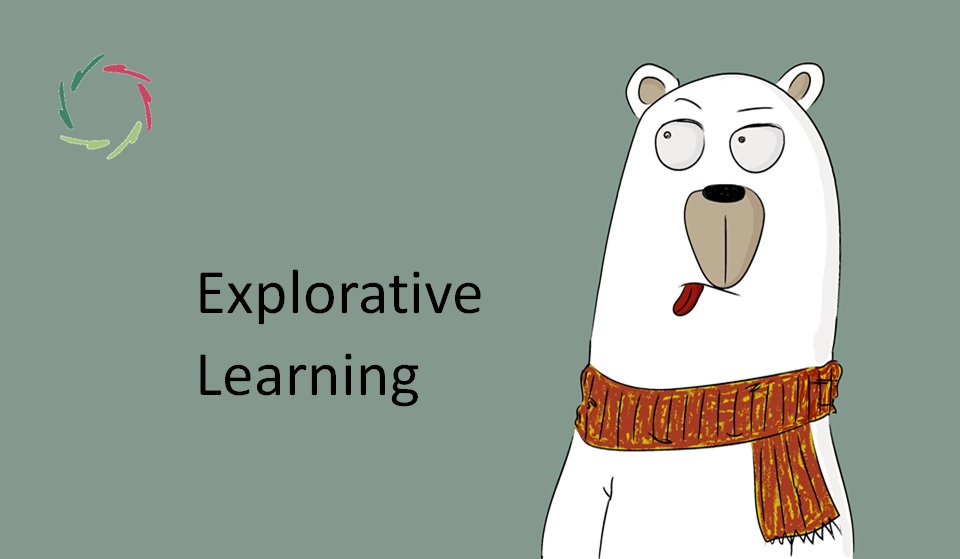Always Avoidance, Always Attraction

From bacteria onwards, life has been about avoidance and attraction. This is still the case within the human being, including the mind. Depending on this, we heal or become sick.
The mental-neuronal level
As neurocognitive science increasingly shows, our ‘universe inside’ contains a myriad of mental-neuronal patterns. [see: “Patterns in Neurophysiology“] These are activated and modulated by pattern recognition and completion. [see: “The Brain as a Predictor“]
One can see this as the hustle and bustle of potential patterns that activate (attract) neurons towards their completion while inhibiting (avoiding) other patterns to do the same. At each interplay, the winner takes it all. Of course, we are not consciously aware of what happens in this arena, only of a sporadic outcome.
At this mental-neuronal (subconceptual) pattern level, avoidance and attraction can also be seen as (parts of) the same action. In its waxing stage, a pattern attracts its parts and avoids others. In its waning stage, it attracts similar patterns and avoids others. This forms a non-conscious stream of patterns. [see: “The Stream of Non-Consciousness“]
This way, continual avoidance and attraction are the core of mental processing. No wonder they play a vital role in everything, also intermingled in everyday human life.
Early childhood
Early childhood experiences form the first mental-neuronal patterns. These are in place when new ones are formed. This way, the first ones are especially present in the whole, while at the same time, they are most ‘forgotten’ as distinct entities. They form the background.
In coaching, it is interesting for the coachee to find support in recognizing lifelong patterns but not to cut them out and replace them with new ones like some lightbulb in an antique television set. One can go to them, find the proper distance, communicate, and see what happens. If some new pattern is genuinely desired, it will spontaneously invite what’s there. This way, backed by the right expertise, a place will be found that is most appropriate.
Lifelong plasticity
Underlying patterns are more ‘distributed’ ― vaguely omnipresent. They don’t pin the whole system (your precious ‘deeper self’) down. On the contrary, science has recently shown more plasticity at the brain level than we could dream of a few decennia ago.
This is of huge importance to coaching/psychotherapy. It can profoundly influence the mind/brain, as we notice more and more through visualization techniques. The way these changes occur is through avoidance and attraction. [see: “Mental Change: How it Works“]
Avoidance and attraction in extremes
One can find both together also in more pronounced health-related issues. Two examples, each starting from another side:
- Phobia ― say, fear of heights. This presents with avoidance. For instance, one does not dare to near a precipice for fear of falling into it. But why should one fall if not by deliberately jumping (or letting go)? Why would one jump if not through feeling attracted (some say ‘fascinated’)?
- Addiction ― say, to gambling. This presents with attraction. When not gambling for a while, the person feels terrible. He can avoid this lousy feeling/emotion by returning to the gambling table. He may also need it to avoid other unresolved affects that might go back to childhood.
It is interesting to be open to both sides of the coin, to the diversity in cases, and to the continual possibility of change in the patterns themselves and one’s view upon them.
What Buddhism has to say
Buddhism is not a religion but a way of life and a good source of inspiration.
Buddha (the latest) saw three sources of suffering: hatred, cupidity, and the illusion of I-ness. One can see in the first two avoidance and attraction. Thus, the Buddhist ideal is sometimes interpreted as being complete equanimity ― no avoidance, no attraction. This is an idea of nirvana that is truly nothing. The candlelight has entirely disappeared. The Wheel of Samsara has stopped.
Dry stuff.
I see nirvana as a background glow of avoidance and attraction.
Within the glow, avoidance and attraction are less discernible, thus more subtle but certainly not less interesting.
Meanwhile, life plays in many things, including in darknesses and candlelights that both obscure the ever-present glow. It is good to return to the glow sometimes. That’s called meditation. [see: “True Meditation is Warm and Friendly“] Let people choose whether and how long they want to be ‘in the glow.’ It seems preferable to know it’s there and keep this knowledge alive by the occasional visit.
That may also help play with avoidance and attraction in real life to make it optimally exciting, joyful, and meaningful.


